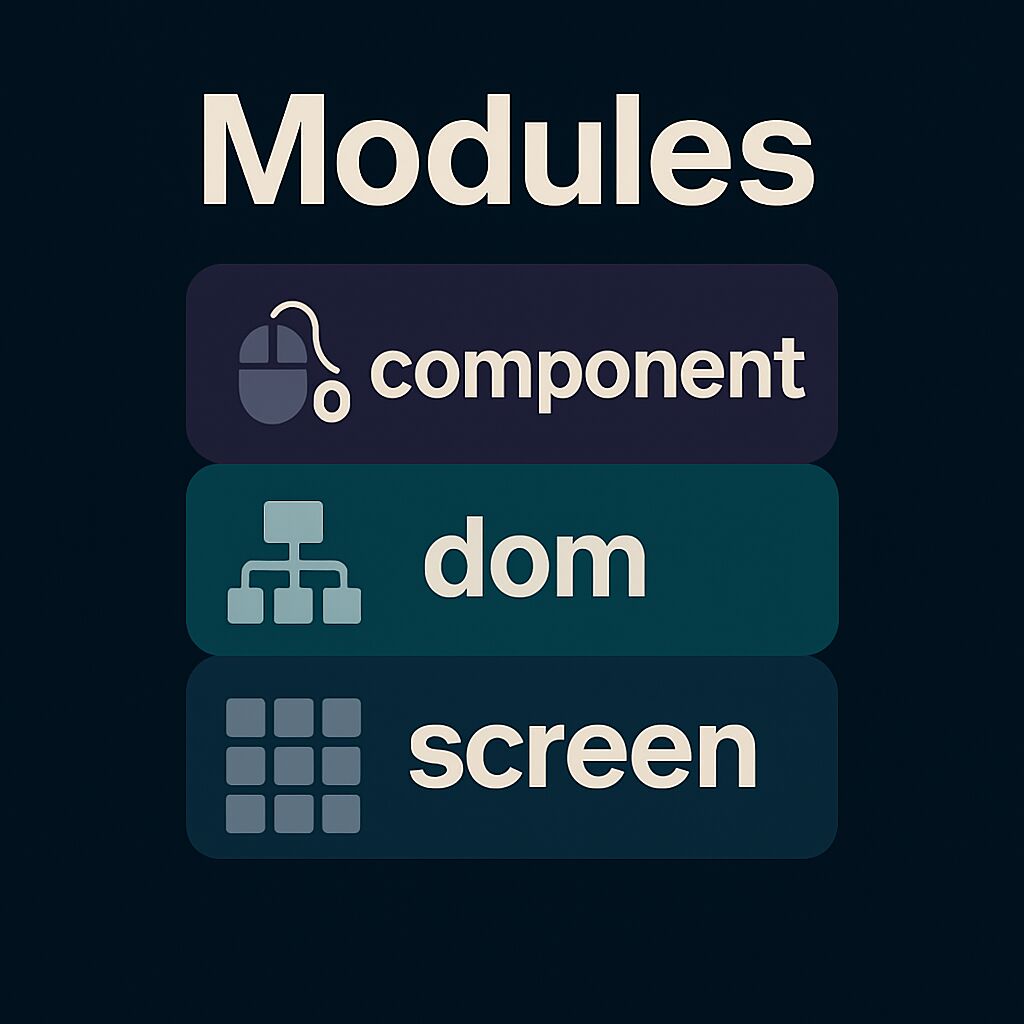# ftxui {#ftxui}

FTXUI is organized into three modules, each building upon the previous:
1. [ftxui/screen](#module-screen) - Low-level rendering
2. [ftxui/dom](#module-dom) - Layout and composition
3. [ftxui/component](#module-component) - User interaction
---
# ftxui/screen
Defines:
- **`ftxui::Screen`**: a 2D grid of styled characters.
- **`ftxui::Pixel`**: the unit of rendering.
- Helpers like `ftxui::Color` and `Dimension`.
Use for direct terminal drawing and styling.
| Next |
|--------------------------------------:|
| [Documentation](module-screen.html) |
---
# ftxui/dom
Provides:
- **`ftxui::Element`**: a tree structure for layout and UI.
- Composable and responsive elements.
- `Render()` to draw onto a `Screen`.
Ideal for structured, styled UIs.
| Next |
|--------------------------------------:|
| [Documentation](module-dom.html) |
---
# ftxui/component
Adds:
- **`ftxui::Component`**: stateful, interactive widgets.
- Built-ins: `Checkbox`, `Input`, `Menu`, `Button`.
- Supports keyboard/cursor input and composition.
Use for interactive apps.
| Next |
|--------------------------------------:|
| [Documentation](module-component.html) |
---
Modules can be used independently, or together: `screen → dom → component`.